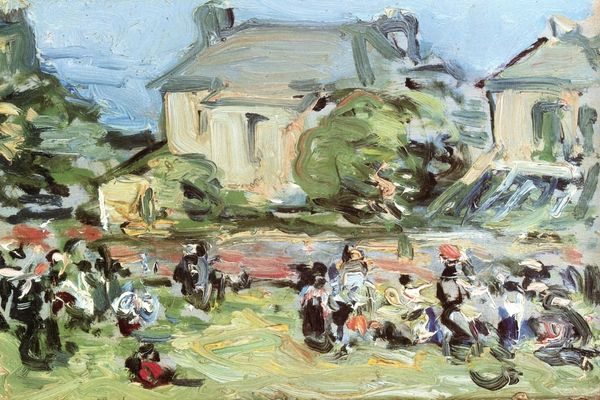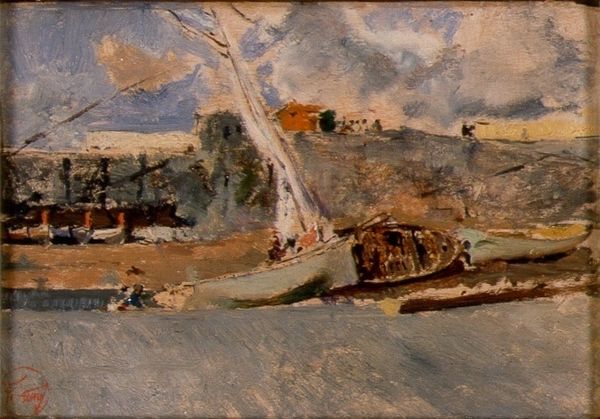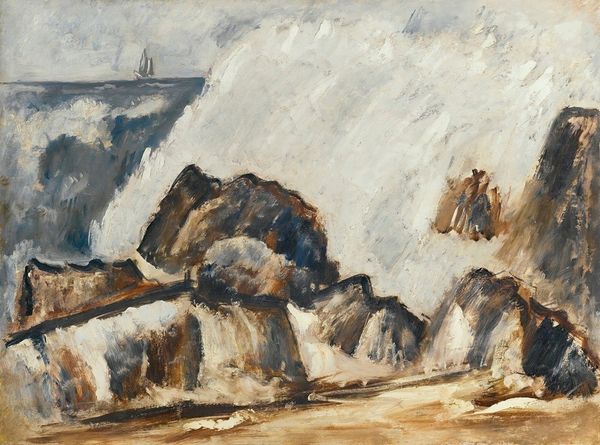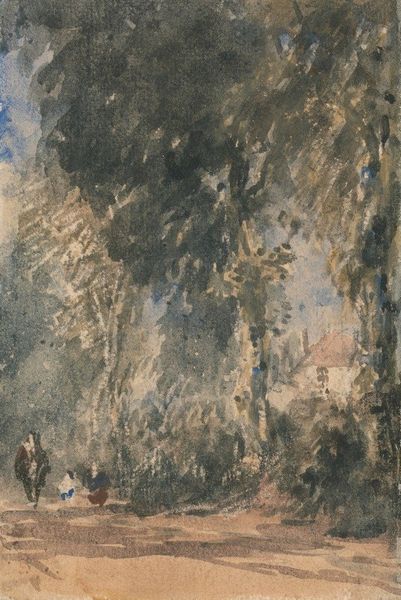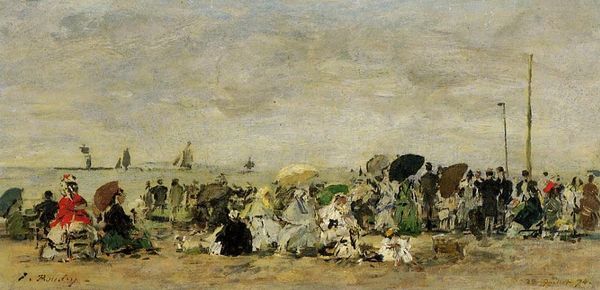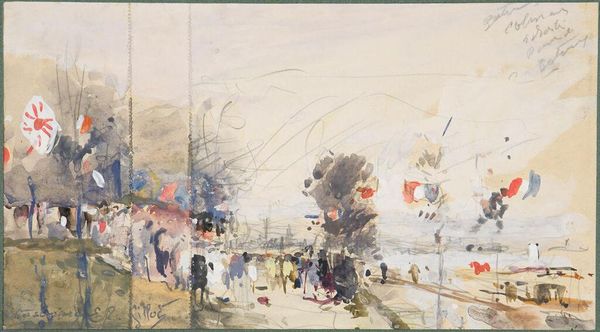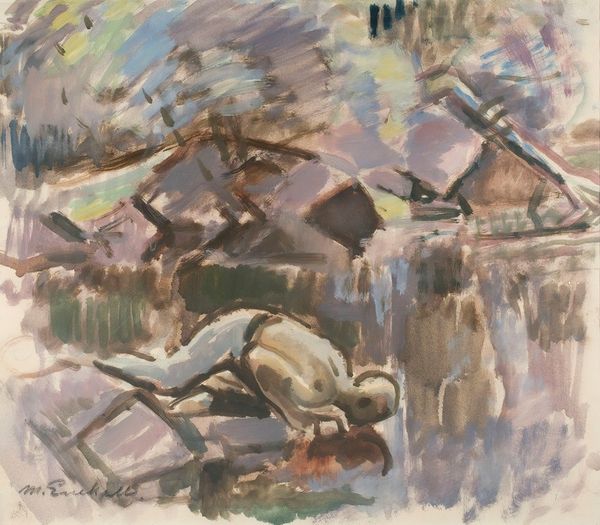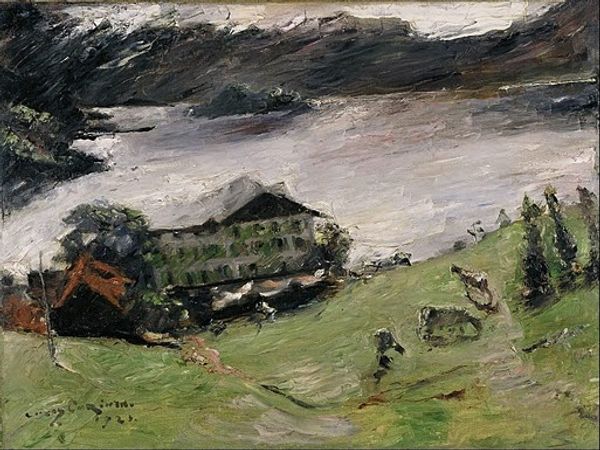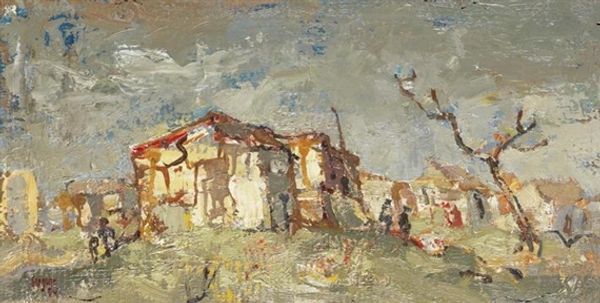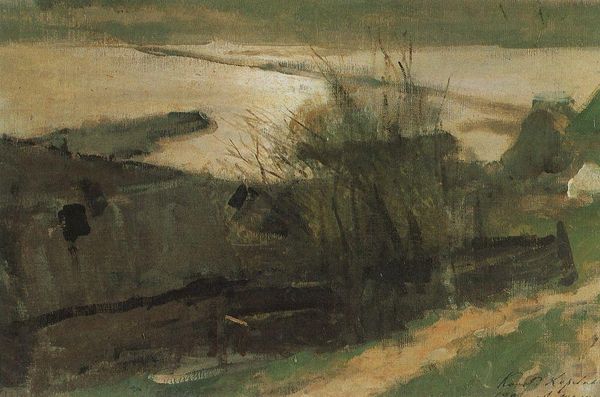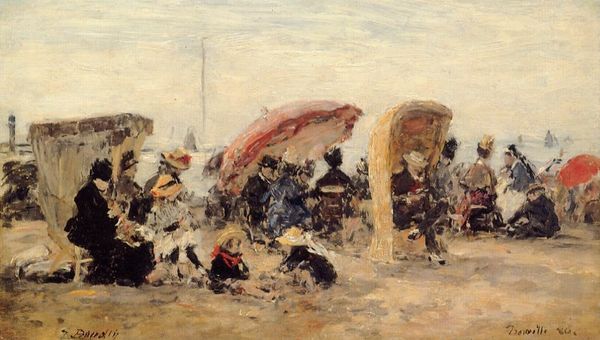
painting, plein-air, oil-paint
#
painting
#
impressionism
#
plein-air
#
oil-paint
#
landscape
#
impressionist landscape
#
possibly oil pastel
#
oil painting
#
orientalism
#
genre-painting
#
building
Dimensions: 19.69 x 34.29 cm
Copyright: Public domain
Curator: This is William Merritt Chase’s “Arab Encampment,” painted in 1883. It offers an intimate glimpse into a North African scene. Editor: It feels so immediate! Almost like a sketch. The brushstrokes are incredibly loose, giving it a real sense of light and atmosphere. It is rather diminutive in size too; you almost feel you could hold the entire scene within arm’s reach. Curator: Indeed. Chase was part of the American Impressionist movement, known for its embrace of plein-air painting and capturing fleeting moments. This work demonstrates that beautifully, not just in subject matter but, importantly, how the painting itself was made. Editor: Right. And, given the title, there’s a layer of orientalism here too, isn't there? European and American artists were fascinated by these “exotic” cultures. How do you see Chase navigating that? Curator: That’s a crucial point. This canvas reveals the power dynamics inherent in that fascination. Chase, as an outsider, is presenting a constructed view of Arab life for Western consumption. It certainly makes me question what his own relationship to that consumption must be, importing a scene for a hungry audience. Editor: Absolutely. Look at how the figures are rendered—generalized, almost like types. They become part of the landscape rather than individuals. Were there ethical considerations back then or did he view it purely as an exercise? Curator: Hard to say what Chase himself was thinking. It is more crucial to note the context in which this and other artworks were created, displayed, and appreciated—shaping perceptions about other cultures for a largely uninformed public, which, to be frank, remains relatively unchanged even today. Editor: Well said! This brings me to consider that what he actually painted with could speak volumes. Do we know more about that part of the process? The oil paints and canvas available, that type of information? Curator: Precisely. Analyzing those raw components informs how the art was made and who made it! Editor: Indeed. "Arab Encampment" raises many questions. Beyond its stylistic appeal and its technical qualities, the social context offers layers of complexity. Curator: It also invites critical examination of the systems through which art and knowledge are produced and consumed even to this day. And hopefully, our discussion helps push for greater scrutiny.
Comments
No comments
Be the first to comment and join the conversation on the ultimate creative platform.
